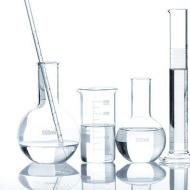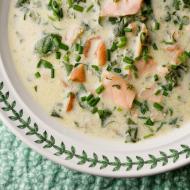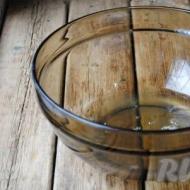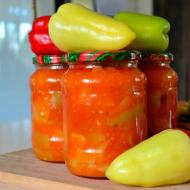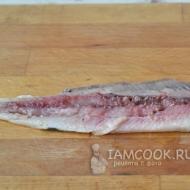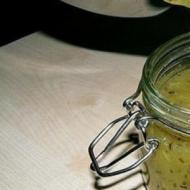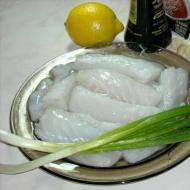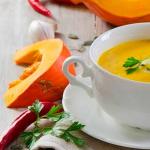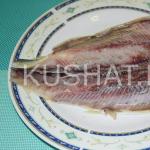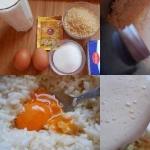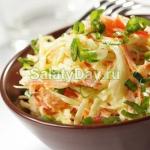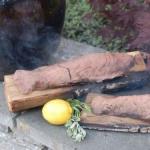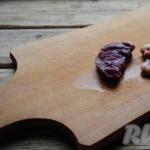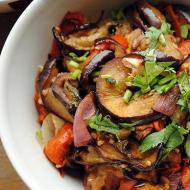
How to make 6 vinegar from 70 vinegar

Vinegar can safely be called a universal product - its scope of application is wide and varied.
But each recipe requires its own concentration. To do this, it is not necessary to have an arsenal of bottles with different strengths of spices in the kitchen. It is enough to know how to make a weaker solution from 9%.
Most often there is a need to make 6 percent vinegar, which has a less pungent smell and taste. There are different options for diluting acetic acid. You can choose the most convenient and affordable one for yourself.
Using mathematical calculations
This is an accurate and reliable method. But not the most convenient to use. Using mathematical calculations, the result is obtained with an accuracy of tenths and even hundredths of grams and milliliters.
As a rule, the housewife has measuring utensils with a division value of 5-10 ml on hand. And most often, products are dosed in spoons and glasses.
For scrupulous housewives there are several calculation formulas.
When the required volume of the final solution is known
For example, you need to get 100 ml of 6% vinegar. The formula used for calculation is:

X = 100 * 6 / 9 = 66.7 ml
That is, to obtain 100 ml of 6% spice, you will need to take 66.7 ml of 9% solution and add water to it to the required volume.
In order not to search and remember the formula every time, you can use the table:

When the initial volume is known
For example, 100 ml of 9% vinegar.
In this case, the formula looks different:

X = 100 * 9 / 6 = 150 ml
This means that from 100 ml of 9% acetic acid you will get 150 ml of a 6% solution.
To simplify the process, you can use a ready-made table:

Using measuring spoons
Most often, housewives think about the strength of a spice already during the cooking process, when there is no time for mathematical calculations and a faster method is required.
In this case, you can use a spoon to get 6% vinegar. Its size (table, dessert, tea) is selected depending on the final volume of the solution.
To obtain the required concentration, you will need to take 9% table vinegar and water in a 2:1 ratio. That is, for 2 tablespoons of acid you will need 1 tablespoon of water.
Additional Information! For the best orientation in volumes, remember that
♦ 1 teaspoon contains 5 ml of liquid;
♦ in 1 dessert spoon – 10 ml;
♦ in 1 tablespoon – 15 ml.
If a larger amount of 6% solution is required, then it would be more rational to use larger containers, for example, glasses. Thus, the volume of a standard faceted glass is 250 ml (to the rim) and 200 ml if poured to the rim.
The proportions will not change when diluting large volumes of acetic acid.
Important! When diluting, it is necessary to use water that has been boiled and cooled to room temperature.
What is 6% vinegar used for?
Why is 6% vinegar so often needed in households? Having a lower strength, it has a much gentler effect on the mucous surfaces of the digestive organs.
As a preservative, it is added to a wide variety of preparations for the winter. It is this strength that provides optimal acidity for the preservation of hermetically sealed products.

This spice is also in demand in cooking. For example, before adding it to baking dough.
6% vinegar is also indispensable when preparing various dishes, as it is able to add a piquant spiciness to dishes without changing the taste of the main ingredients.
It is this concentration of spice that is most often used in barbecue.
In addition, 6% vinegar is one of the most common traditional medicines. For example, it is recommended to use .
Despite the fact that it is much easier to replace 6% table vinegar with the same 9%, it is better to stick to the strength specified in the recipe.
After all, depending on the concentration of acid contained in the seasoning, the amount of other ingredients is calculated. And if the proportions are not respected, the dish can lose not only its “zest”, but also its entire taste.
And when using vinegar as a medicine, increasing its concentration instead of benefiting can cause harm.
Vinegar is used in a huge number of different cooking recipes. How to dilute acetic acid 70% to 9% vinegar, the table will be later in the article.
Wherein, vinegar essence may be involved in the preparation of some mixtures for traditional treatment. Vinegar of various concentrations is usually used as an ingredient. There are cases when 70% is needed; it is sold in stores already in this concentration. But sometimes people need a 3%, 6%, 9% solution. To obtain this, you need to dilute the existing vinegar, and you will get a solution that is suitable for any purpose.
Vinegar can be used for various purposes, for example, as a seasoning for a ready-made dish, sauce or marinade. By the way, this is an indispensable component for any seaming. Let's finally reveal the secret of how to dilute vinegar to the concentration we need.
To dilute 70% acetic acid we will need water in certain proportions. They are different for each solution. If you are good at mathematics, it will not be difficult for you to calculate all this. For those who skipped math classes at school, you have compiled a special table.
Convert acetic acid 70% to 9% vinegar - table 1

Be careful when manipulating with vinegar! Contact with skin may cause chemical burns.

In order to obtain a 9% vinegar solution, you need to find the amount of water in grams using the following formula: multiply 100 grams of vinegar by 70% and divide by 9. All this equals the number 778, you need to remove 100 from it, because we immediately took 100 grams of vinegar, the result is 668 grams of water. Now you need to mix 100 grams of vinegar and the resulting amount of water to obtain 9% vinegar.
How to dilute vinegar by eye
Since not every person will strictly observe the required proportions, such a solution can be made by eye. To do this, take seven parts water to one part vinegar. This will approximately be equal to the required percentage.
There are cases when you need to quickly marinate meat or make mustard, take a 30% solution, to make it you need to mix a tablespoon of vinegar with 1.5 tablespoons of water.

A simple table for diluting acetic acid in spoons:
How to dilute acetic acid 70 to 9 vinegar - table 2 in spoons

Here is the result: in order to dilute 70% vinegar to a 9% solution, you need 1 part vinegar and 7 tablespoons of water.
Advice: there is information obtained as a result of experiments. A faceted glass holds 17 tablespoons of water. It turns out that if you need to get 9% to one glass of water, you need to add two tablespoons of 70% vinegar. It's simple!
Vinegar has an important place for all culinary professionals, doctors, and other industries, so it is very important to know how to handle it. We hope that in our article you found the answer to your question.
Every housewife has a bottle of vinegar in her kitchen. But here’s the problem: vinegar of different concentrations is used for different purposes. Which vinegar is better to buy and how to dilute vinegar essence to the percentage you need, we will consider below.
What is vinegar essence
First, let's clarify what vinegar essence is. This is a 70% aqueous solution of acetic acid. This solution contains 7 parts acid and 3 parts water. Sometimes you can find 80% and 30% essence on sale. Accordingly, in the first the ratio of acid and water will be 8:2, and in the second - 3:7. Such concentrated solutions are dangerous; if taken orally, they cause burns to the mucous membranes of the digestive tract. In industrial production it is called the food additive E260, and housewives use it in the kitchen and for household purposes in the form of diluted table vinegar. Table vinegar is also sold in stores, its concentration ranges from 3% to 9%. In addition, on the shelves you can find vinegar made from natural raw materials: apple, wine, malt, balsamic, sherry and even coconut. This product is used for preparing culinary dishes.
And yet, the essence is most in demand for everyday needs. After all, from one teaspoon you can prepare a whole glass of table vinegar. Before we learn how to dilute vinegar essence 70%, let's focus on the quality of the original product.
How to buy good quality vinegar
High-quality essence is sold only in glass bottles. There should be three convex rings on the neck of the bottle to warn visually impaired people that the product is dangerous for ingestion. There are also four horizontal stripes on the bottle; between the bottom two there is a manufacturer’s stamp on the inner surface of the glass. The label indicates the concentration of vinegar - 70%. When shaken, the contents foam, then within two to three seconds they become the same. If the bottle is counterfeit, the foam will last longer than ten seconds. Do not buy counterfeits, they are harmful to your health and, at best, will ruin your prepared dishes and preserves.
Usually the label gives very brief instructions on how to dilute vinegar essence. Manufacturers write that you need to dilute the original product with water one to twenty. To obtain a solution of different concentrations, the amount of initial ingredients will be different. You can use a mathematical formula.
Mathematical calculation
For those who are good with mathematics, the easiest way to dilute the essence to the required concentration is using the formula:
- The amount of essence required to obtain table vinegar = the desired concentration of the solution * the volume of the finished solution we need / the concentration of the essence.
For example: how to dilute vinegar essence to obtain 200 ml of 9% table vinegar.
9% * 200 ml / 70% = 25.7 ml of essence, add water to 200 ml.
In another option, you can go from the opposite.
- Amount of water required for dilution = amount of essence * concentration of essence / desired concentration of solution.
For example: it is necessary to dilute 15 ml of 70% vinegar essence to 6% table vinegar.
To do this, you need the following amount of water: 15 ml * 70% / 6% = 175 ml of water.
To measure volume, you can use a measuring cup or rely on the following numbers:
1 teaspoon = 5 ml, 1 dessert spoon = 10 ml, 1 tablespoon = 15-20 ml (depending on its depth). Classic faceted glass: full = 250 ml, rim = 200 ml, vodka shot glass = 50 ml.

For those who don’t want to bother with calculations, we suggest using standard coefficients.
How to make nine percent vinegar
Table vinegar of this concentration is used for canning food. How to dilute vinegar essence to obtain a solution with a concentration of 9%? It is necessary to dilute the essence with 70% water in the ratio: 1 part concentrate and 7 parts water. That is, for 0.5 liters of water you need to add 75 ml of essence (one and a half shot glasses).
A solution of table vinegar is recommended to be used as a rubdown for diseases accompanied by an increase in body temperature. How to dilute vinegar essence at temperature? Pour one liter of water into an enamel bowl and add 2 tbsp. l. 9% table or apple cider vinegar.

How to make six percent vinegar
Six percent table vinegar is added to meat marinades. How to dilute vinegar essence: 10.5 parts water to 1 part concentrate. To obtain 0.5 liters of solution, take 45 ml of essence (three tablespoons).

How to make three percent vinegar
Table vinegar with a concentration of 3% is used to season ready-made dishes: salads, dumplings, pickled mushrooms, onions, sauces, etc.
How to properly dilute vinegar essence and get a three percent solution: take 22 parts of water for one part of essence. To prepare 0.5 liters of table vinegar you need 20 ml of vinegar essence 70%.

Dilute the essence in a glass or enamel container. First, the required amount of clean drinking water is measured into it. The water should be cool. Then add the calculated amount of vinegar essence. Avoid contact of the concentrate with the skin and especially with the mucous membranes of the eyes and mouth. But if such a nuisance does occur, rinse the affected area under cool running water. Store vinegar essence in a dark place out of reach of children. Remember - this is an acid, and if handled incorrectly, it can cause harm to health.
Acetic acid is widely used in industry. An aqueous solution of acetic acid in the form of food additive E260 is used as a preservative. Moreover, unlike many other preservatives used, acetic acid in reasonable concentrations is considered safe for health. That is why it is common in home cooking and canning. Housewives often have to dilute acetic acid solutions to the desired concentration. How to do it right?
Concentrated acetic acid (concentration of about 100%) is called glacial and is not used in everyday life. Moreover, acetic acid with a concentration of more than 80% is included in the list of precursors whose circulation in the Russian Federation is limited. Attempts to purchase and use such acid can lead to serious trouble with the law.
Less concentrated solutions are sold completely freely. In stores you can buy vinegar essence (aqueous solution with a concentration of 70-80%), acetic acid solution (25-30%), table vinegar with a concentration of 3-9%. Such diversity often leads to the fact that recipes indicate a certain amount of acetic acid of one type, but a completely different one is available. But it doesn’t matter, everything can be easily calculated and replaced.
A less concentrated vinegar from a more concentrated one (for example, 9% vinegar from a 70% essence) can be obtained by diluting it with water. Water must be cool and clean, preferably filtered or distilled. It is impossible to obtain a more concentrated vinegar from a less concentrated one. However, in some cases (for example, the recipe indicates 70% essence, but only 9% table vinegar is available), you can simply take more of the weak solution. All calculations can be carried out using an interactive calculator for dilution schemes for aqueous solutions. It's very easy to use.
In most cases, breeding is carried out according to standard schemes, which are given below. The article uses “culinary” breeding schemes, expressed in parts. You can measure parts by teaspoons or tablespoons. It is also convenient to use a large 10 or 20 gram medical syringe.
How to get table vinegar 3%
3% vinegar is most often used for salad dressing. To obtain it you need to dilute:
- 1 part 80% vinegar essence to 25.7 parts water
- 1 part 70% vinegar essence to 22.3 parts water
- 1 part 30% acetic acid solution to 9 parts water
- 1 part 9% table vinegar 2 parts water
How to get table vinegar 5%
5% vinegar is used for dressing salads and preparing sauces. To obtain it you need to dilute:
- 1 part 80% essence to 15 parts water
- 1 part 70% essence to 13 parts water
- 1 part 30% acetic acid solution for 5 parts water
- 1 part 9% table vinegar to 0.8 parts water
How to get table vinegar 6%
6% vinegar is most often used for marinating meat. To obtain it you need to dilute:
- 1 part 80% essence to 12.3 parts water
- 1 part 70% essence to 10.7 parts water
- 1 part 30% acetic acid solution 4 parts water
- 1 part 9% table vinegar to 0.5 parts water
How to get table vinegar 9%
9% vinegar is used in canning. To obtain it you need to dilute:
- 1 part 80% essence to 7.9 parts water
- 1 part 70% essence and 6.8 parts water
- 1 part 30% acetic acid solution for 2.3 parts water
Vinegar 9% can be replaced with a less concentrated one:
- 1 part 9% vinegar can be replaced with 1.5 parts 6% vinegar
- 1 part 9% vinegar can be replaced with 3 parts 3% vinegar
How to get vinegar 10%
10% vinegar is used in canning. To obtain it you need to dilute:
- 1 part 80% essence to 7 parts water
- 1 part 70% essence and 6 parts water
- 1 part 30% acetic acid solution for 2 parts water
Vinegar 10% can be replaced with a less concentrated one:
- 1 part 10% vinegar can be replaced with 1.1 parts 9% vinegar
- 1 part 10% vinegar can be replaced with 1.7 parts 6% vinegar
- 1 part 10% vinegar can be replaced with 3.3 parts 3% vinegar.
How to get 25% from xus
25% vinegar is used for household purposes. To obtain it you need to dilute:
- 1 part 80% essence to 2.2 parts water
- 1 part 70% essence to 1.8 parts water
How to get vinegar 30%
30% vinegar is used for household purposes. To obtain it you need to dilute:
- 1 part 80% essence to 1.7 parts water
- 1 part 70% essence and 1.3 parts water
How to replace vinegar essence 70%
70% vinegar is used for canning. Vinegar essence 70% can be replaced with less concentrated vinegar:
- 1 part 70% vinegar essence can be replaced with 2.3 parts 30% acetic acid solution
- 1 part 70% vinegar essence can be replaced by 2.8 parts 25% acetic acid solution
- 1 part 70% vinegar essence can be replaced with 7 parts of 10% acetic acid solution
- 1 part 70% vinegar essence can be replaced with 7.8 parts of 9% table vinegar
- 1 part 70% vinegar essence can be replaced with 11.7 parts of 6% table vinegar
- 1 part 70% vinegar essence can be replaced with 14 parts 5% table vinegar
- 1 part 70% vinegar essence can be replaced with 23.3 parts of 3% table vinegar
If the recipe uses water, its amount must be reduced by the amount of diluted vinegar added.
Be careful when working with concentrated solutions of acetic acid (more than 15%). Even acid vapors can cause burns to the skin and mucous membranes. Use personal protective equipment and work in a ventilated area. If acid gets on your skin, it should be washed off immediately with water. If acid gets into your eyes, rinse with plenty of water and consult a doctor.
Every housewife has a bottle of vinegar in her kitchen. But here’s the problem: vinegar of different concentrations is used for different purposes. Which vinegar is better to buy and how to dilute vinegar essence to the percentage you need, we will consider below.
What is vinegar essence
First, let's clarify what vinegar essence is. This is a 70% aqueous solution of acetic acid. This solution contains 7 parts acid and 3 parts water. Sometimes you can find 80% and 30% essence on sale. Accordingly, in the first the ratio of acid and water will be 8:2, and in the second - 3:7. Such concentrated solutions are dangerous; if taken orally, they cause burns to the mucous membranes of the digestive tract. In industrial production it is called the food additive E260, and housewives use it in the kitchen and for household purposes in the form of diluted table vinegar. Table vinegar is also sold in stores, its concentration ranges from 3% to 9%. In addition, on the shelves you can find vinegar made from natural raw materials: apple, wine, malt, balsamic, sherry and even coconut. This product is used for preparing culinary dishes.
And yet, the essence is most in demand for everyday needs. After all, from one teaspoon you can prepare a whole glass of table vinegar. Before we learn how to dilute vinegar essence 70%, let's focus on the quality of the original product.
How to buy good quality vinegar
High-quality essence is sold only in glass bottles. There should be three convex rings on the neck of the bottle to warn visually impaired people that the product is dangerous for ingestion. There are also four horizontal stripes on the bottle; between the bottom two there is a manufacturer’s stamp on the inner surface of the glass. The label indicates the concentration of vinegar - 70%. When shaken, the contents foam, then within two to three seconds they become the same. If the bottle is counterfeit, the foam will last longer than ten seconds. Do not buy counterfeits, they are harmful to your health and, at best, will ruin your prepared dishes and preserves.
Usually the label gives very brief instructions on how to dilute vinegar essence. Manufacturers write that you need to dilute the original product with water one to twenty. To obtain a solution of different concentrations, the amount of initial ingredients will be different. You can use a mathematical formula.
Mathematical calculation
For those who are good with mathematics, the easiest way to dilute the essence to the required concentration is using the formula:
- The amount of essence required to obtain table vinegar = the desired concentration of the solution * the volume of the finished solution we need / the concentration of the essence.
For example: how to dilute vinegar essence to obtain 200 ml of 9% table vinegar.
9% * 200 ml / 70% = 25.7 ml of essence, add water to 200 ml.
In another option, you can go from the opposite.
- Amount of water required for dilution = amount of essence * concentration of essence / desired concentration of solution.
For example: it is necessary to dilute 15 ml of 70% vinegar essence to 6% table vinegar.
To do this, you need the following amount of water: 15 ml * 70% / 6% = 175 ml of water.
To measure volume, you can use a measuring cup or rely on the following numbers:
1 teaspoon = 5 ml, 1 dessert spoon = 10 ml, 1 tablespoon = 15-20 ml (depending on its depth). Classic faceted glass: full = 250 ml, rim = 200 ml, vodka shot glass = 50 ml.
For those who don’t want to bother with calculations, we suggest using standard coefficients.
How to make nine percent vinegar
Table vinegar of this concentration is used for canning food. How to dilute vinegar essence to obtain a solution with a concentration of 9%? It is necessary to dilute the essence with 70% water in the ratio: 1 part concentrate and 7 parts water. That is, for 0.5 liters of water you need to add 75 ml of essence (one and a half shot glasses).
A solution of table vinegar is recommended to be used as a rubdown for diseases accompanied by an increase in body temperature. How to dilute vinegar essence at temperature? Pour one liter of water into an enamel bowl and add 2 tbsp. l. 9% table or apple cider vinegar.

How to make six percent vinegar
Six percent table vinegar is added to meat marinades. How to dilute vinegar essence: 10.5 parts water to 1 part concentrate. To obtain 0.5 liters of solution, take 45 ml of essence (three tablespoons).

How to make three percent vinegar
Table vinegar with a concentration of 3% is used to season ready-made dishes: salads, dumplings, pickled mushrooms, onions, sauces, etc.
How to properly dilute vinegar essence and get a three percent solution: take 22 parts of water for one part of essence. To prepare 0.5 liters of table vinegar you need 20 ml of vinegar essence 70%.

Dilute the essence in a glass or enamel container. First, the required amount of clean drinking water is measured into it. The water should be cool. Then add the calculated amount of vinegar essence. Avoid contact of the concentrate with the skin and especially with the mucous membranes of the eyes and mouth. But if such a nuisance does occur, rinse the affected area under cool running water. Store vinegar essence in a dark place out of reach of children. Remember - this is an acid, and if handled incorrectly, it can cause harm to health.
Good day, dear readers! Today I’m writing a short note on the topic: how to properly dilute 70 percent vinegar to make 9 percent. I have had vinegar essence 70% for a long time, so today I decided to turn it into regular table vinegar 9%.
Now is the time for homemade preparations, many housewives actively use vinegar for preservation, and at this moment they may also have a question: how to make vinegar of the required strength from the essence. In addition to cooking, vinegar is also used as a disinfectant and is even used for treatment (traditional medicine).
Vinegar can be natural or synthetic. Natural vinegar, naturally, is more expensive. But you can prepare it yourself from fruits (for example, apples or grapes). Natural vinegar will contain alcohol. Some housewives sometimes end up with vinegar instead of wine when the fermentation technology is broken.
Synthetic vinegar is made from acetic acid chemically. This is a cheap option for home cooking. It is used for pickling foods, canning, and added to salads, sauces and many other dishes.
Making 9 percent vinegar from 70 percent is very simple: you need to take 1 part 70% vinegar and 7 parts water. Mix vinegar with water - 9% vinegar is ready. For example, for 3 tablespoons of vinegar you need to take 21 tablespoons of water.
Just be careful not to get acetic acid on your skin. And you can even put on a gauze bandage, because the smell of the essence is pungent.
How to make vinegar 3%, 4%, 5%, 6%, 9%, etc. from vinegar essence.
| Calculation for 1 tbsp. spoon of vinegar 70% | |
| what % of vinegar will we get? | how much water should be added to the essence |
| 3% vinegar | 22.5 tbsp. l. water |
| 4% vinegar | 17th century l. water |
| 5% vinegar | 13th century l. water |
| 6% vinegar | 11th century l. water |
| 7% vinegar | 9 tbsp. l. water |
| 8% vinegar | 8 tbsp. l. water |
| 9% vinegar | 7 tbsp. l. water |
| 10% vinegar | 6 tbsp. l. water |
| 30% vinegar | 1.5 tbsp. l. water |
People have been using vinegar for a long time, using it, overwhelmingly, when cooking. This spice is colorless, but in some cases it can be slightly colored. Cuisine recipes from different countries are quite unique, but not a single cook or housewife can do without vinegar. The food industry produces vinegar of different concentrations, but if one dish requires a concentrated 70%, then for others it is only 9%, or even less concentrated. Vinegar is made from ethyl alcohol, and not a single preserve or marinade can do without it.
How to dilute vinegar 70% to 9%
Since 70% vinegar, or rather the essence, and this is the most convenient form of its release and home storage, consists of acetic acid and water, then you need to bring the solution to 9% with ordinary boiled water. Since the essence is produced in glass containers, it must also be diluted in a glass container, since strong essence can corrode plastic. First, water is poured into the container, and then the essence is added. In order for such an operation to take as little time as possible, in order to dilute 70% vinegar to 9%, you need to dissolve one spoon of vinegar in 7 parts of water.
How to dilute 70% vinegar to the required concentration
There are precise proportions in order to obtain vinegar of the required concentration from the essence, because it is used not only in food, but for many other purposes. There is a table in which the proportions are tied to the capacity of an ordinary tablespoon. So, to obtain the desired concentration, you need to add 70% vinegar to one tablespoon:
- 22.5 tbsp. spoon - you get 3% vinegar;
- 17th century spoon – 4% vinegar;
- 13th century spoons – 5%;
- 11th century spoons – 6%;
- 9 tbsp. spoons – 7%;
- 6 tbsp. spoons - 8%;
- 7 tbsp. spoons – 9%;
- 6 tbsp. spoons – 10%;
- 1.5 hundred. spoons – 30%.
There is another option to dilute 70% vinegar to 9%. It has been experimentally established that an ordinary cut glass contains 17 tablespoons of water. Therefore, to obtain a 9% solution, you need to pour 2 tablespoons of 70% vinegar into one faceted glass.
How to dilute 9% vinegar to 6%
There are situations when there is table vinegar of 9% concentration in the house, but the recipe requires only 6%. No mathematical calculation formulas are required here. You just need to add one part of water to two parts of 9% vinegar. The result will be 6% vinegar.
Using vinegar in different concentrations
Quite often, diluted vinegar is used in home medicine. Compresses with vinegar are good for reducing fever. To use this folk remedy, you need vinegar at a 6% concentration.
The end of summer and early autumn is a troublesome time for all housewives. This is the time to prepare for the winter - pickling, canning, boiling. In general, my mouth is full of worries. And this often happens when, in the middle of the canning process, it suddenly turns out that there is not a drop of vinegar in the house. It doesn’t matter, in this case there is a more thrifty neighbor who will always come to the rescue. Only bad luck - my neighbor happened to have 70% vinegar essence, but it’s not suitable for preservation. There is only one way out - dilute it. Today we will tell you how to dilute acetic acid 70 to 9 percent and not disrupt the stockpile.
Product Types
The simplest answer to the question: “Where does vinegar come from?” - "From the shop". But let's expand our horizons a little today. Each of us can remember a case when an open bottle of wine or beer, left unfinished, turned sour after a while. During the process of souring or fermentation, acetic acid is formed.
Only natural food vinegar is obtained through fermentation. To do this, fermented alcohol-containing liquids are distilled and a concentrated vinegar essence is obtained, which subsequently ends up on store shelves.
We will tell you how to dilute vinegar essence to 9% vinegar later, but now a little about the types of this product. Today, several types of food vinegar are used for culinary purposes:
- Alcohol is a natural product without any aftertaste. It is obtained from an aqueous solution of ethyl alcohol.
- Rice is a product based on fermented rice or rice wine. It is indispensable as a flavorful seasoning.
- Balsamic is a natural product with a sweetish odor, dark color and thick consistency.
- Fruit is an excellent seasoning for vegetable salads and dumplings. Apple cider vinegar has gained popularity as a healing remedy.
- Flavored - a product obtained from alcohol vinegar by adding spicy and aromatic herbs.
- Malt - produced on the basis of barley malt. Accentuates the taste of prepared dishes and gives them tartness.
- Sherry - made from wine must from Muscatel or Palomino grape varieties.
- Synthetic - it is extracted from sawdust or in the production of mineral fertilizers from natural gas. It has a pronounced chemical taste and smell. It features low-cost production. It hits store shelves with the inscription “Dining”. The main difference from natural vinegar is the increased content of toxic and carcinogenic substances, but it impresses with its low cost.
Table vinegar is often used to prepare marinades. Therefore, situations may arise where knowledge of how to obtain 9% vinegar from 70% acetic acid. To do this, just use a special table and follow a few simple tips.
Safety regulations
But before looking at the table, you need to familiarize yourself with the safety rules:
- We dilute the original composition exclusively with cold water - filtered, boiled, but not from the tap.
- You should not drink, eat or chew gum during this process. This increases the chances of the essence getting on the mucous membranes, which will need to be immediately washed with plenty of running water.
- In our work we use only measuring spoons and cups. When diluting acetic acid, accuracy is of great importance. If you make even a slight mistake, the final product could be ruined.
- Vinegar evaporates quite quickly in the air, so at the final stage you should tightly close the storage container and hide it in a dark and cool place.

What else do you need to remember?
A simple mathematical formula will help you make 9% vinegar at home. It can also be used in situations where it is necessary to prepare a composition of higher or lower strength.
Do you like vinegar?
Vote
"70 / 9 = 7.7"- Based on these data, calculating the proportions is quite simple. It is enough to dilute 1 tablespoon of acetic acid with 7 tablespoons of cold water. They are carefully mixed several times, and the output is table vinegar.

Additional data
When the question arises of how to obtain 9% vinegar from 70% acetic acid, for greater convenience it is worth using a special table that indicates the necessary proportions for preparing different types of final product:
|
Required strength |
Amount of ingredients (in tablespoons) |
|
10% vinegar solution |
1 tablespoon diluted with 6 tablespoons water |
|
9% vinegar solution |
1 tablespoon diluted with 7 tablespoons water |
|
8% vinegar solution |
1 tablespoon diluted with 8 tablespoons water |
|
7% vinegar solution |
1 tablespoon diluted with 9 tablespoons water |
|
6% vinegar solution |
Dilute 1 tablespoon with 11 tablespoons of water |
|
5% vinegar solution |
1 tablespoon diluted with 13 tablespoons water |
|
4% vinegar solution |
1 tablespoon mixed with 17 tablespoons of water |
|
3% vinegar solution |
1 tablespoon diluted with 22.5 tablespoons of water |
|
20% vinegar solution |
Dilute 1 tablespoon with 2.5 tablespoons of water |
|
30% vinegar solution |
1 tablespoon diluted with 1.5 tablespoons of water |
As you can see, getting the necessary product at home is not at all difficult. But it is best to use this method only in emergency cases, so as not to endanger your health and be sure that the taste will not be affected.

